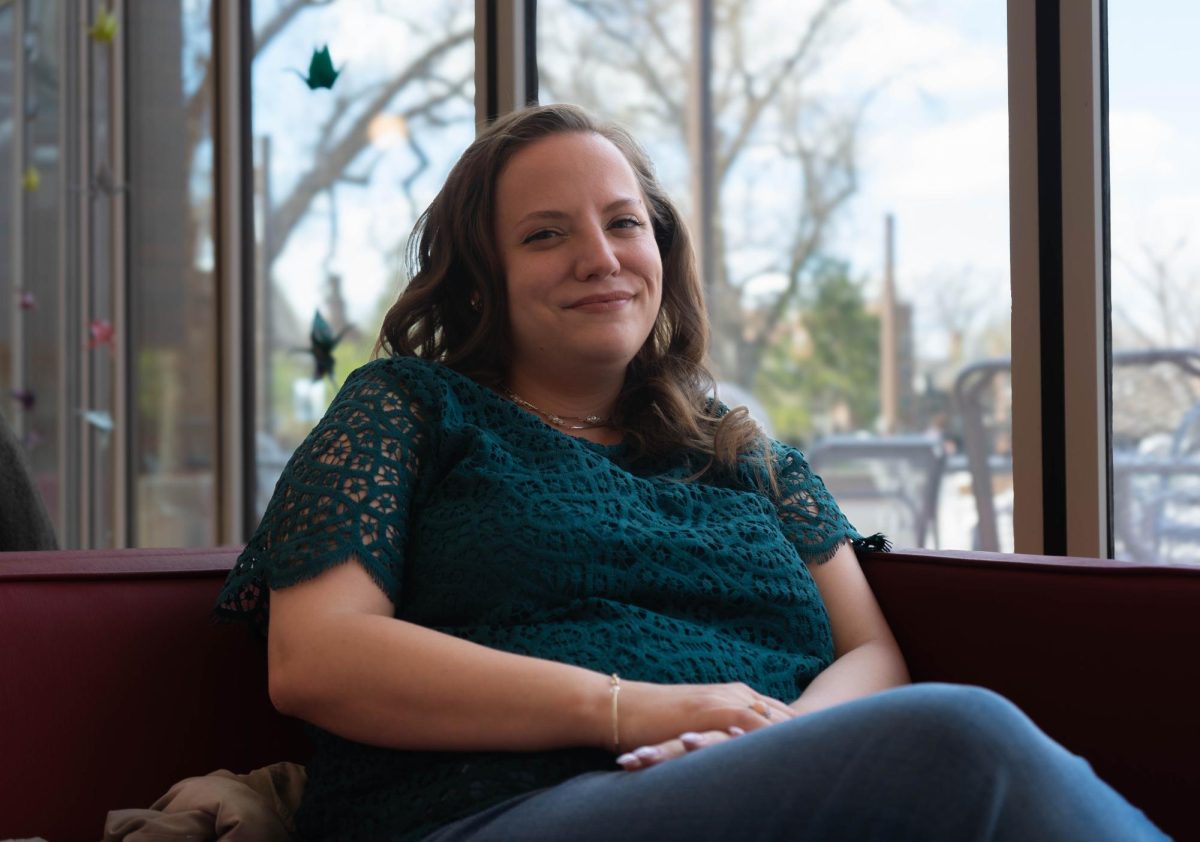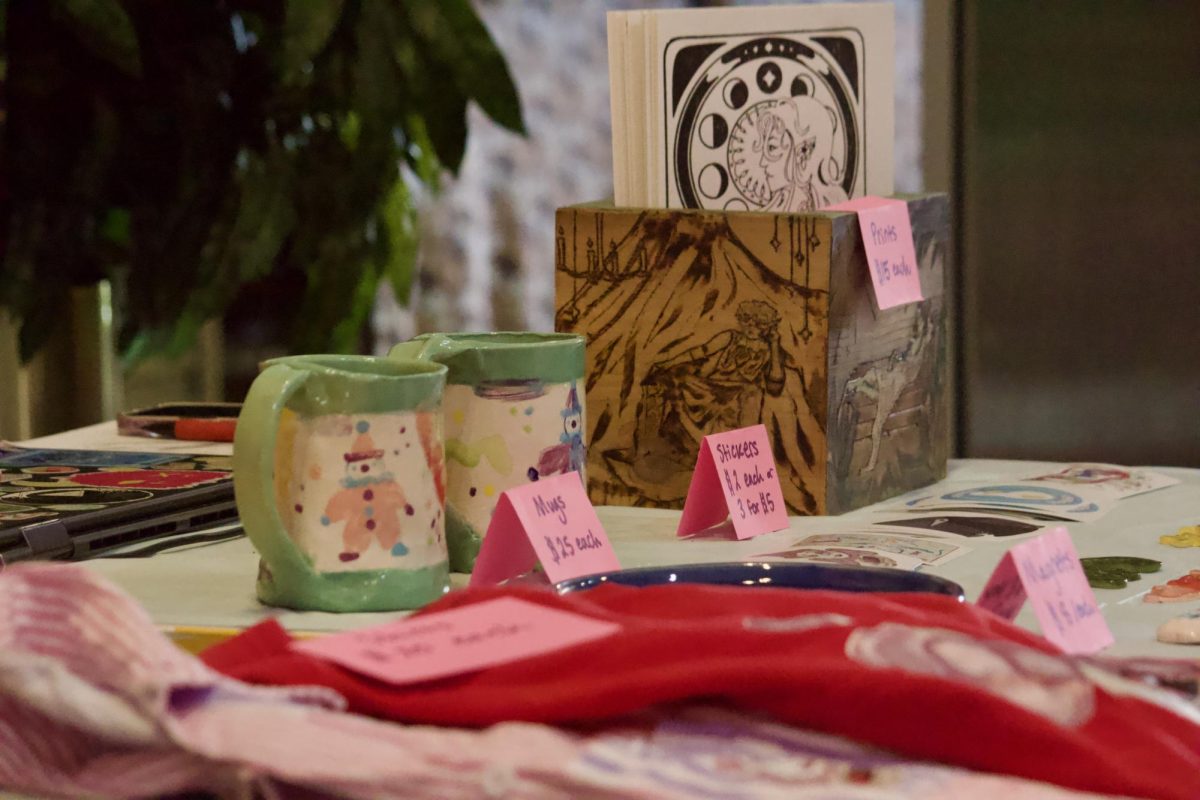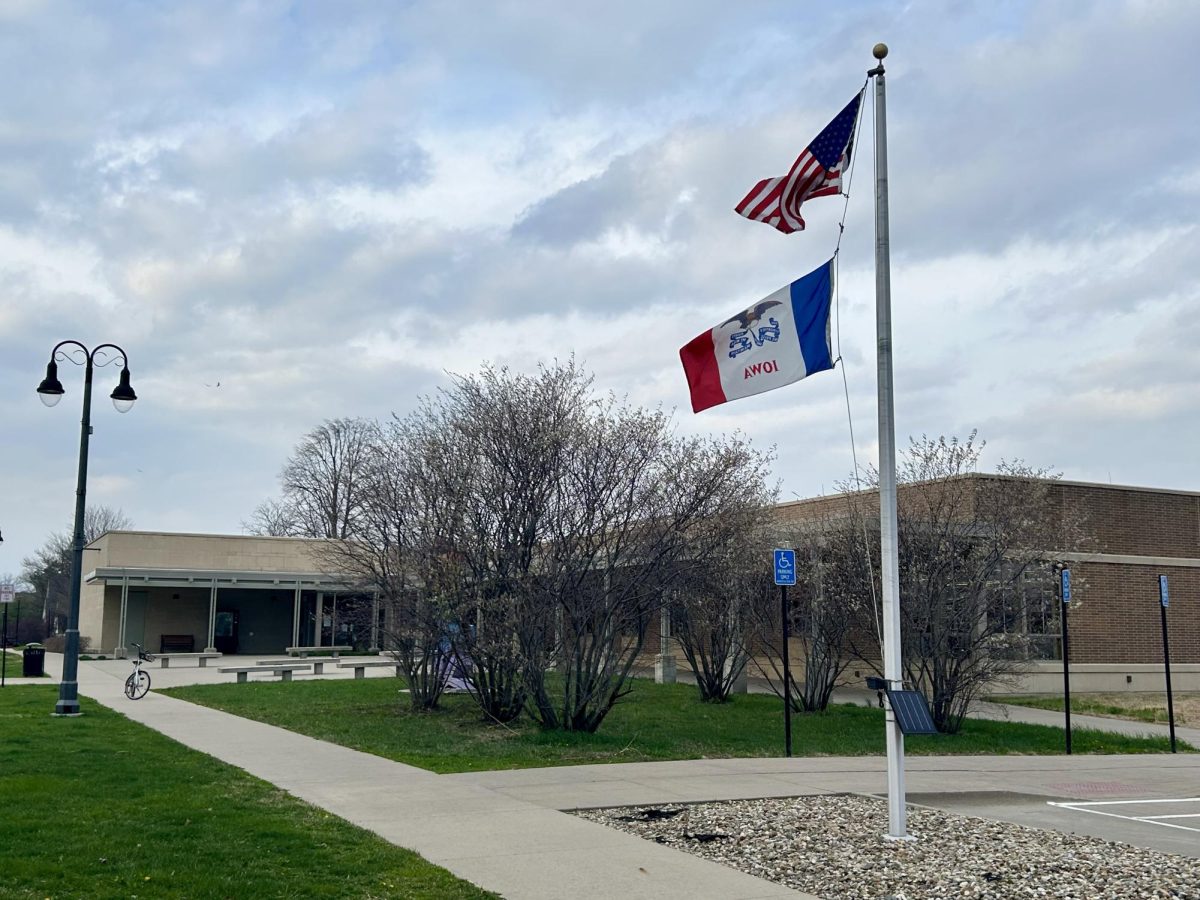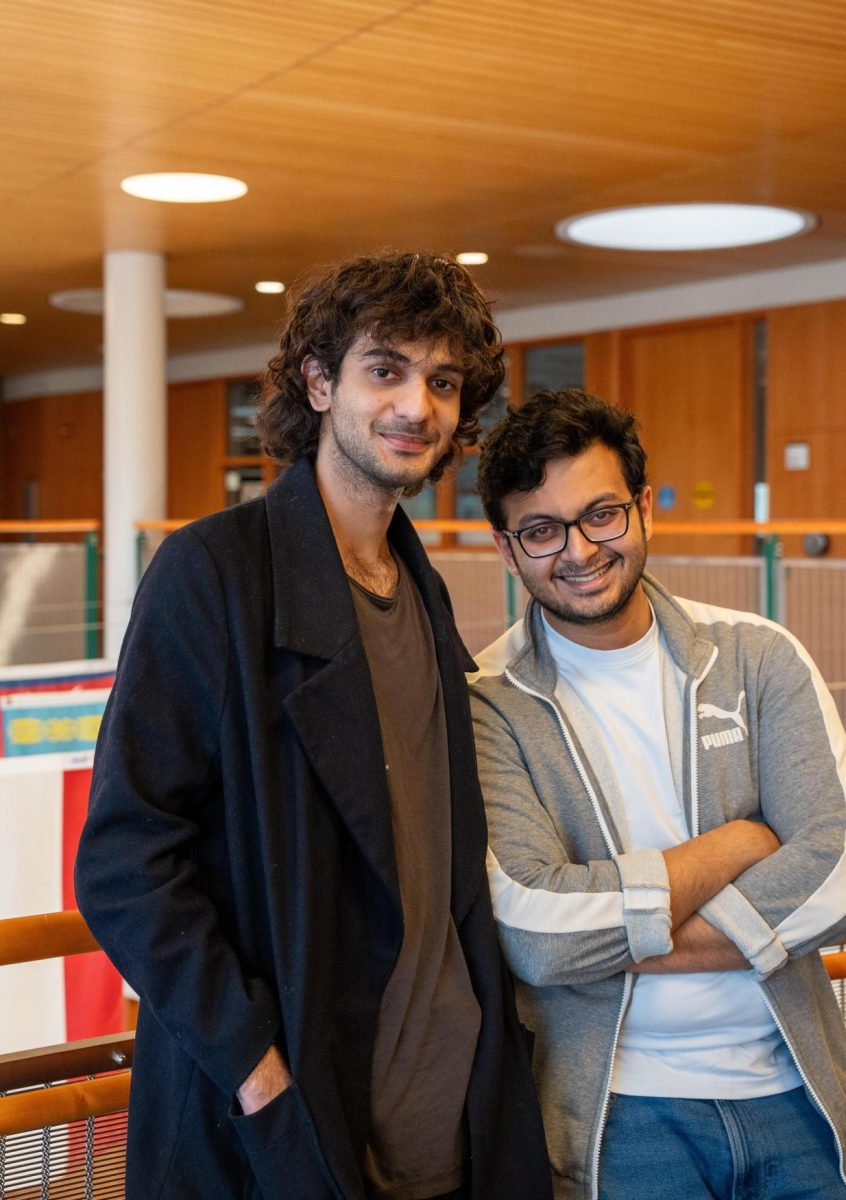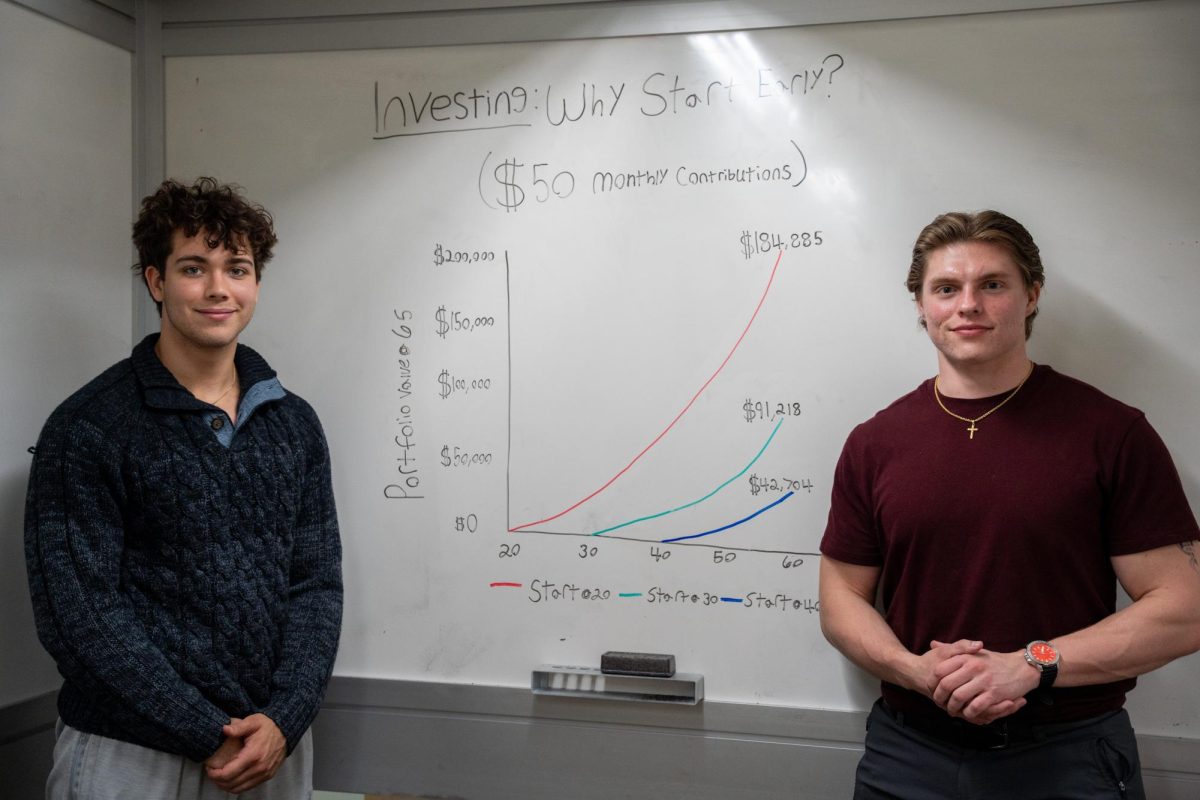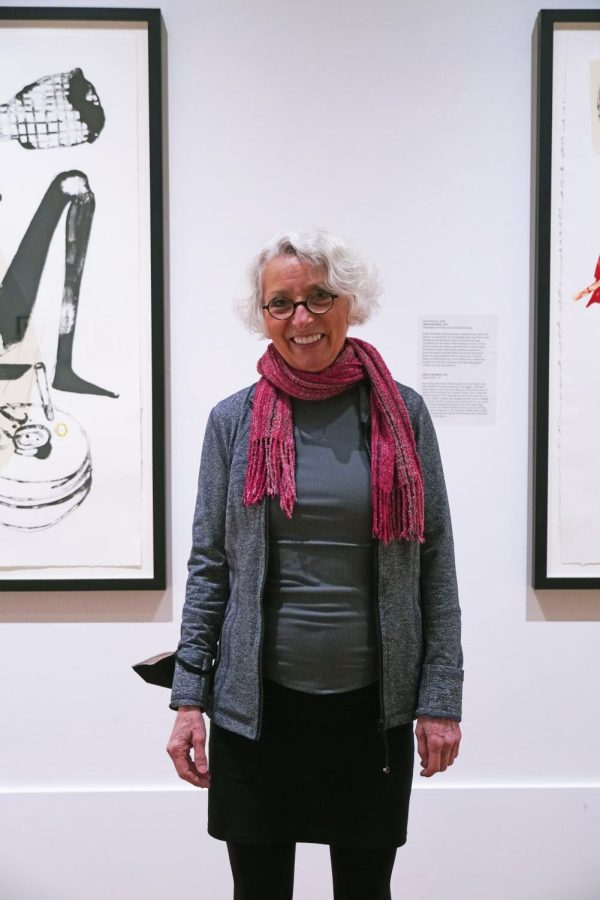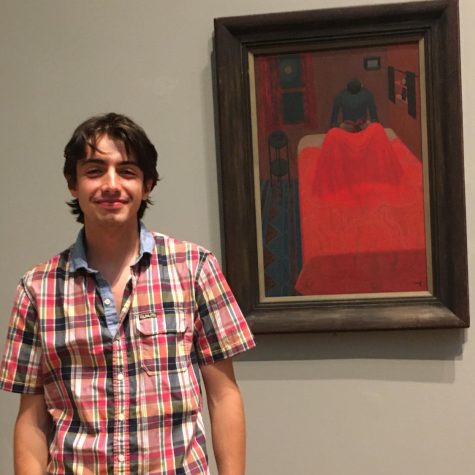Grinnell Artists: Tilly Woodward
While Tilly Woodward holds two degrees in sculpture, oil painting has been her medium of choice for the past two decades.
December 5, 2022
Rendered in vivid color and exquisite detail, random objects and elements of nature emerge alongside one another, all in heavy contrast against monochro- matic backgrounds. Baseballs, butterflies, silverware and minnows populate Tilly Woodward’s paintings. More than anything else, though, she paints bird nests — woven lattices of twigs so delicate that it feels they might blow away in the slightest breeze. Surprising combi- nations of subject matter — a humming- bird beside a wine cork, a chess piece in a nest, flowers and a Swiss Army knife wrapped in red ribbon — arrest the eye and engender new, unexpected resonanc- es between seemingly ordinary objects.
For Woodward, the curator of academic and community outreach at the Grinnell College Museum of Art, art has always been an important mode of speech and self-expression. “From a young age, it was an essential form of communication for me, both in terms of interior dialogue but also as a way of processing the world,” she said. “One of my earliest memories is of scribbling, which is probably no surprise,” she added with a laugh, alluding to the intricately tangled lines of her signature nests.
Woodward grew up on a farm, which she credited as a significant influence on her work. She said that it provided her with ample free time to pursue her artistic passion while also acquainting her with interactions in the natural world and the cycles of life and death which now resonate throughout her paintings.
She also cited her high school experience at Phillips Academy, in Andover, as an important step in her artistic development. “The art department there was tremendous, while going to a high school that had its own museum was a pretty fantastic experience. In fact, my first paying job off the farm was working one spring break at the museum, cutting mats for their works on paper.”
As she studied, Woodward said she was always interested in a variety of mediums. “I did quite a bit of work in ceramics early on, and my MFA and my BFA are both in sculpture. I switched to two-dimensional work once I finished my MFA and drew for about twenty years exclusively, and then started paint- ing in 1999.”
Over the years, she has noticed her work change dramatically in content as well as form. “When I was younger, I think my work was angrier and more confrontive,” she said. “As I’ve gotten older, I’ve grown more interested in building relationships rather than confrontive ones. The idea of beauty in quiet reflection has been an important influence in this last phase of work that I’ve been involved with.”
Woodward’s most recent work consists of an array of small oil paintings —various objects are depicted at the center of stark, black backgrounds. She said that she favors this compositional style because, for one thing, it is highly practical. “I work a pretty busy job, between forty and fifty hours a week at least. I paint in the evenings between seven and nine, and on the weekends, so I find it works really well to have something that’s focused and that allows me to look at one thing very clearly.”
She said that this style also allows her to investigate how objects hold mem- ory and meaning. “With each object, you might not know its history, but I hope that the viewer feels some intent as they’re looking at it. Oftentimes, things may be paired which might not naturally go together but somehow the forms’s interaction or the metaphor that the two objects create makes a lot of sense to me.”
She said that she hopes her paint- ings can help others appreciate the world around them in new ways. “Slowing down is one of the things that I engage with, and I hope that the paintings help other people engage with that too, taking time to notice small things and their inherent meaning and beauty,” she said.
Woodward paints commissioned and non-commissioned works which have been exhibited nationally in galleries and museums, and they can be found in museum, corporate and private collections around the world. At Grinnell, her work is most visible as part of the annual Grinnell College Innovator for Social Justice Prize (Grinnell Prize), awarded annually to individuals who, according to the College’s website, are “standing strong in the face of adversity” and “creatively approaching the biggest challenges that confront society today.”
Woodward said that the College reached out to her in 2011 during the prize’s inception, since some of her past work had engaged with themes of social justice. She suggested creating a painting to tell a story about the work of the individuals who won the prize. “I’ve had the privilege and the honor of creating visual metaphors to tell the stories of people and organizations who are doing incredible good in the world, which has been a lovely task.”
Now, every year, Woodward makes a painting for the Grinnell Prize that distills the winner’s life and work into abstract form. She said that this entails a process of navigating between conveying information while also producing something that is aesthetically striking. “You need content, but you also need to have something that’s visually successful,” she said.
Woodward said that currently she is enjoying finishing up a commissioned piece, but she is also looking forward to returning to her own work. “I’ve been thinking that doing some flowers that will carry me through the dark of winter might be nice,” she said.
Her art can be found online at her website (www.tillywoodward.com) and on campus at the Macy House and the Nollen House.




